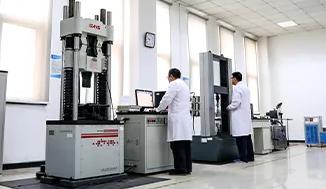Submerged Arc Welding Wire Production Facilities and Their Key Features
The Role of Submerged Arc Welding Wire Factories in Modern Manufacturing
Submerged Arc Welding (SAW) is a highly efficient and commonly used welding process in various industrial applications. One of the critical components of this process is the welding wire, which is produced in specialized factories dedicated to meeting the demands of modern manufacturing. This article delves into the significance of submerged arc welding wire factories, their manufacturing processes, and their contributions to the welding industry.
Understanding Submerged Arc Welding
Before exploring the factories that produce SAW wire, it is essential to comprehend the process itself. Submerged Arc Welding is characterized by the application of a blanket of granular flux over the welding zone to protect the molten weld pool from atmospheric contamination. This method is favored for its high deposition rates, deep penetration, and ability to weld thick materials quickly. It is commonly used in shipbuilding, pipeline construction, and large structural components, making the quality of welding wire a critical factor in the overall efficacy of the process.
The Importance of Quality SAW Wire
The performance of the submerged arc welding process heavily relies on the quality of the welding wire. Factors such as chemical composition, mechanical properties, and the diameter of the wire play vital roles in the weld's final characteristics. High-quality SAW wire provides excellent arc stability, reduces spatter, and enhances the appearance of the weld bead. Therefore, factories producing SAW wire must adhere to stringent quality control measures and utilize advanced manufacturing techniques to ensure their products meet the required specifications.
The Manufacturing Process of SAW Wire
The production of submerged arc welding wire involves several key stages. Initially, raw materials such as steel scrap and alloying elements are sourced. These materials are then melted in an electric arc furnace, where they are refined to achieve the desired chemical composition. Following this, the molten metal is cast into billets, which are then hot-rolled or cold-drawn into wire.
During the wire-drawing process, precise controls are maintained to produce wires of various diameters, typically ranging from 1.2 mm to 5.0 mm. After drawing, the wire is coiled and undergoes a series of quality assurance tests, including tensile strength, elongation, and chemical analysis, to ensure it meets both national and international standards.
submerged arc welding wire factories

The factories often incorporate modern technologies such as automated manufacturing lines, allowing them to increase efficiency and reduce production costs. Additionally, the use of computer numerical control (CNC) machines and robotics enhances precision and minimizes human error in the manufacturing process.
Environmental Considerations
In recent years, there has been an increasing focus on the environmental impact of industrial activities. Submerged arc welding wire factories are no exception, and many have begun implementing eco-friendly practices. This includes optimizing energy consumption, recycling waste materials, and reducing emissions. By adopting sustainable practices, these factories not only comply with environmental regulations but also contribute to a greener future.
The Global Market for SAW Wire
The demand for submerged arc welding wire has been steadily increasing due to the growth of industries such as construction, transportation, and energy. As economies expand, the need for robust infrastructure and manufacturing capabilities drives the requirement for high-quality welding solutions. This has led to an increase in the number of submerged arc welding wire factories worldwide, particularly in regions with a strong manufacturing base.
These factories often operate on a global scale, exporting their products to meet international standards. The competitive landscape is continually evolving, with advancements in technology influencing production methods and product offerings. Factories are now focusing on developing specialty wires tailored to specific applications, enhancing their market appeal and ensuring they meet diverse customer needs.
Conclusion
Submerged arc welding wire factories play an essential role in the welding industry, providing essential products that meet the evolving demands of modern manufacturing. Through advanced manufacturing processes, stringent quality control measures, and a focus on sustainability, these factories contribute to the overall efficiency and effectiveness of submerged arc welding applications. As the global market for welding solutions continues to expand, the importance of high-quality welding wire and the factories that produce it remains paramount. The synergy between technological advancement and manufacturing excellence will undoubtedly shape the future of this critical industry.
-
Premium Carbon Rods for Welding | Stable Arc & Precise GougingNewsAug.27,2025
-
Carbon Steel Welding Wire: Superior Strength & PrecisionNewsAug.26,2025
-
AWS E6013 Welding Electrodes: All-Position & Smooth Arc RodsNewsAug.25,2025
-
E312 Electrode: High Strength Welding Rod for Dissimilar MetalsNewsAug.24,2025
-
J506 Welding Rod: High-Strength, Crack-Resistant ElectrodeNewsAug.23,2025
-
E71T-1 Shielding Gas for Superior Welding Quality & EfficiencyNewsAug.22,2025


